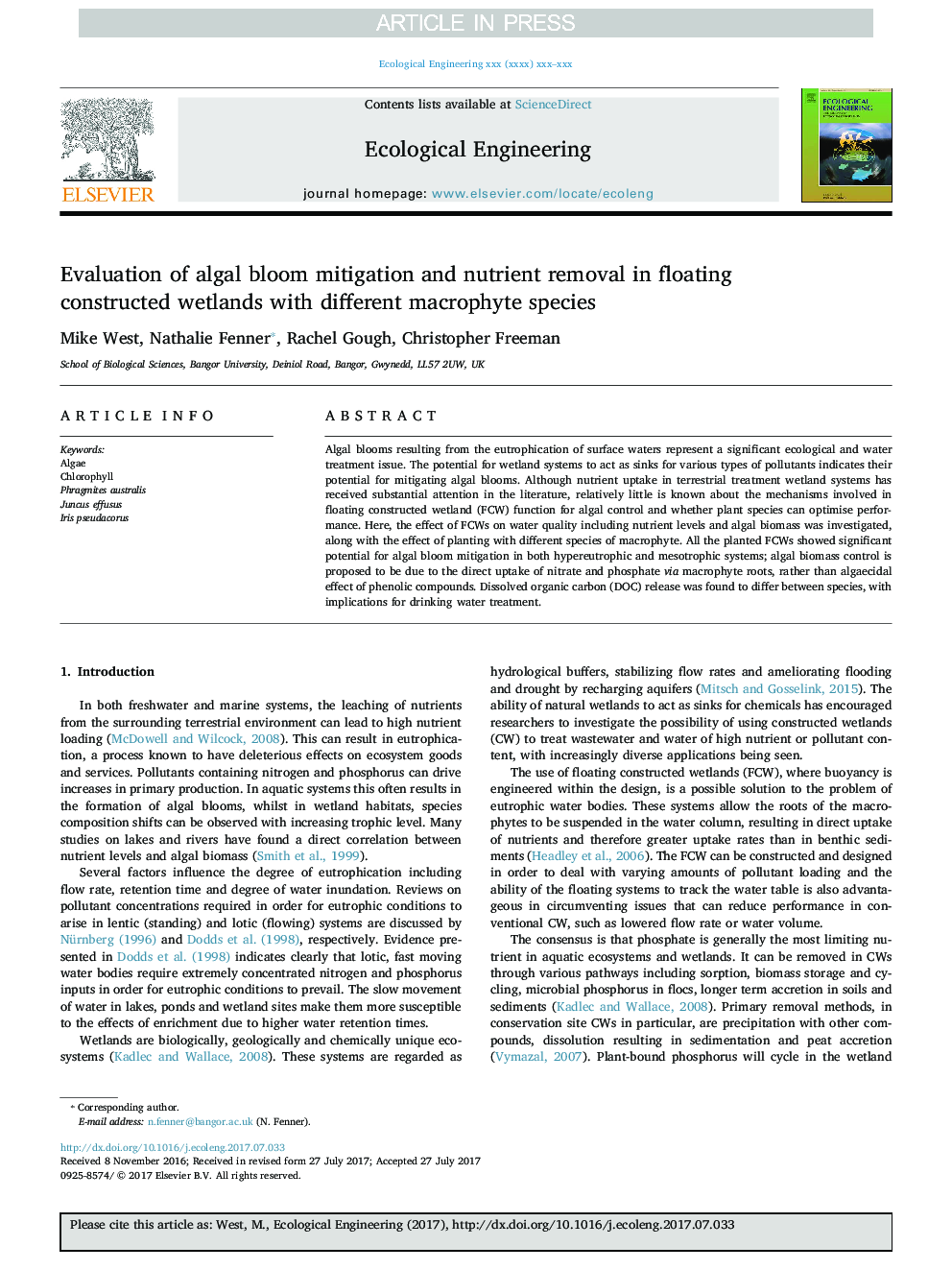| Article ID | Journal | Published Year | Pages | File Type |
|---|---|---|---|---|
| 8848217 | Ecological Engineering | 2017 | 8 Pages |
Abstract
Algal blooms resulting from the eutrophication of surface waters represent a significant ecological and water treatment issue. The potential for wetland systems to act as sinks for various types of pollutants indicates their potential for mitigating algal blooms. Although nutrient uptake in terrestrial treatment wetland systems has received substantial attention in the literature, relatively little is known about the mechanisms involved in floating constructed wetland (FCW) function for algal control and whether plant species can optimise performance. Here, the effect of FCWs on water quality including nutrient levels and algal biomass was investigated, along with the effect of planting with different species of macrophyte. All the planted FCWs showed significant potential for algal bloom mitigation in both hypereutrophic and mesotrophic systems; algal biomass control is proposed to be due to the direct uptake of nitrate and phosphate via macrophyte roots, rather than algaecidal effect of phenolic compounds. Dissolved organic carbon (DOC) release was found to differ between species, with implications for drinking water treatment.
Related Topics
Life Sciences
Agricultural and Biological Sciences
Ecology, Evolution, Behavior and Systematics
Authors
Mike West, Nathalie Fenner, Rachel Gough, Christopher Freeman,
